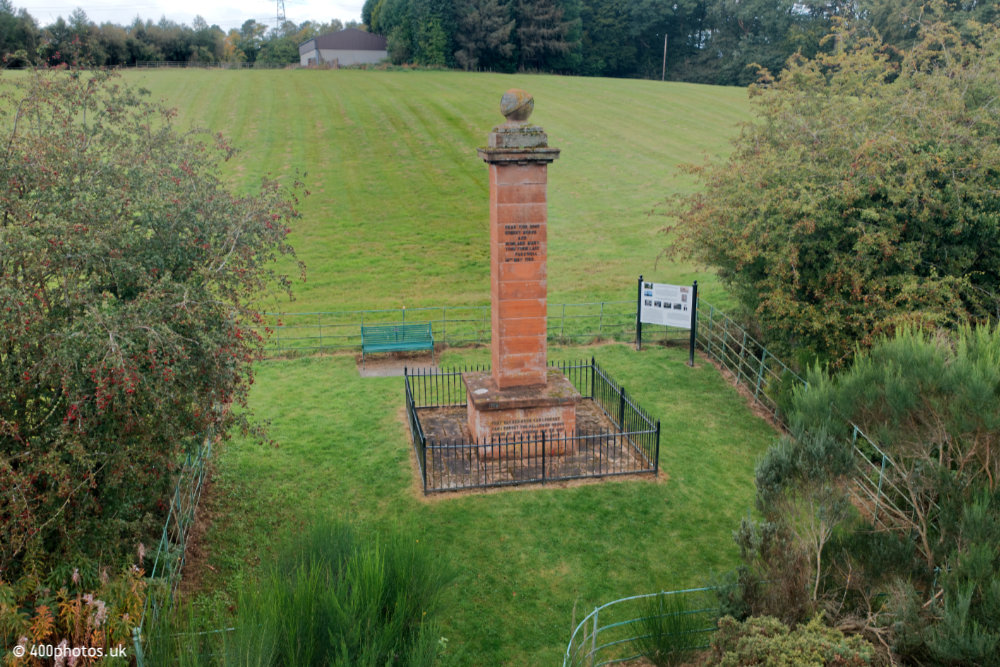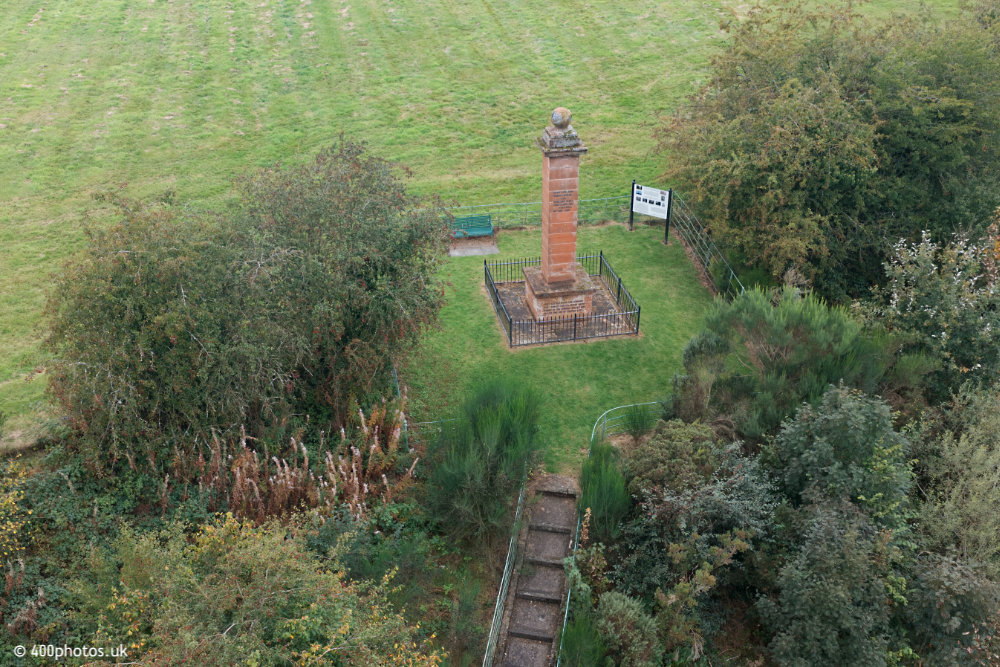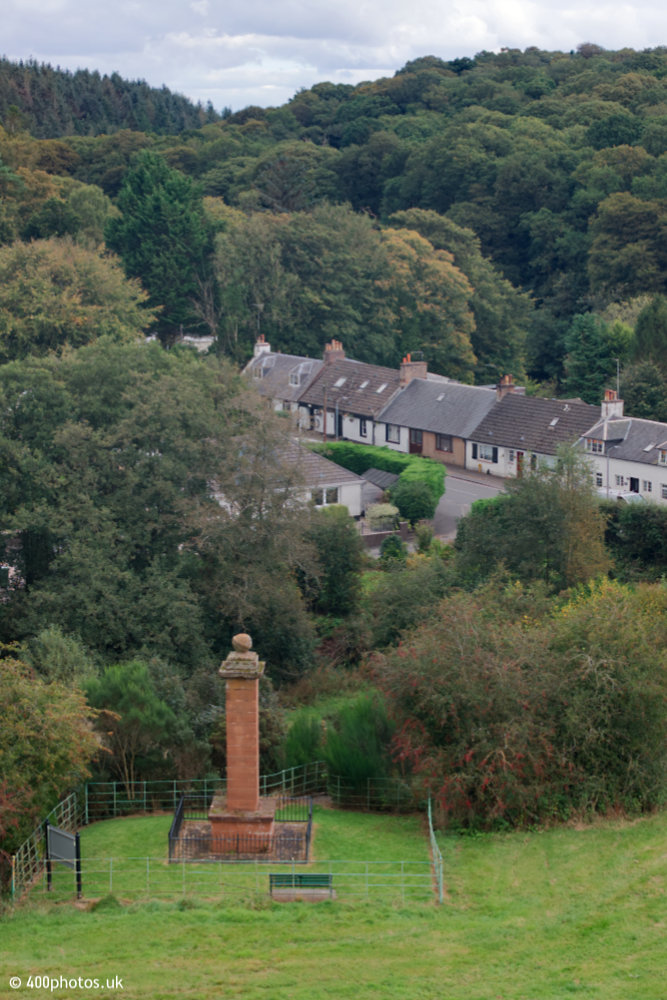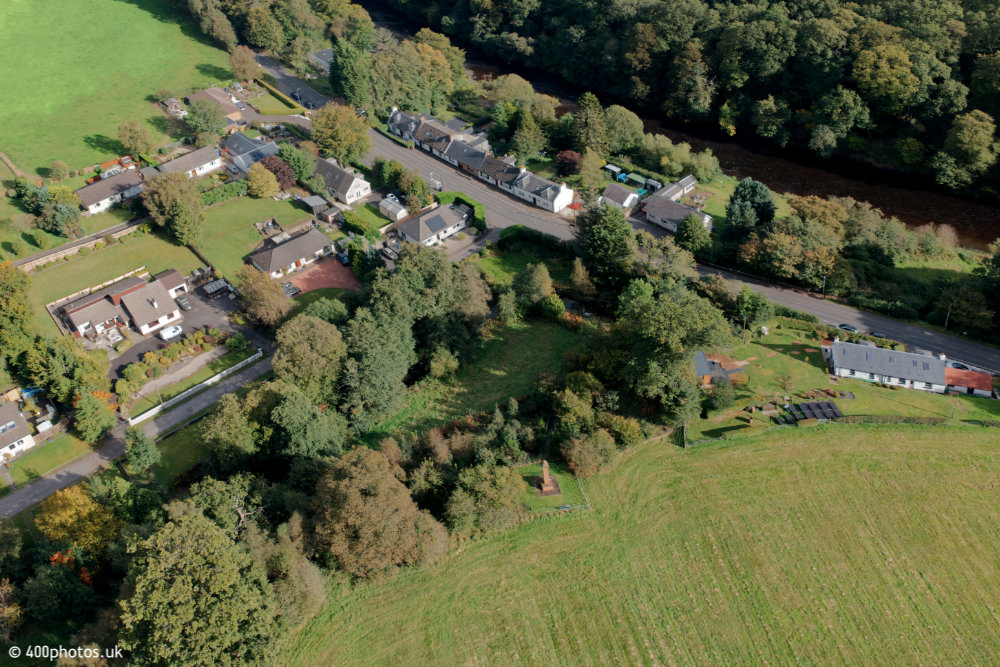Burns & Highland Mary
Failford

This monument (built in 1921) is tucked away on a hillside just to the west of Failford in Ayrshire.
It commemorates the spot where Robert Burns, poet and lover, said goodbye to one of his ladies known as Highland Mary in 1786. She died six months later.
There's free parking on the main road and access to the monuments is also free though limited to able-bodied parties. The information board and inscriptions tell the story.
It commemorates the spot where Robert Burns, poet and lover, said goodbye to one of his ladies known as Highland Mary in 1786. She died six months later.
There's free parking on the main road and access to the monuments is also free though limited to able-bodied parties. The information board and inscriptions tell the story.

To access the monument you use a steep, stepped path up from the River Fail thorough the village.
Why this monument? Burns wrote poems about her despite the fact that they'd only been acquainted for less than six weeks. She was taken away when her father found out who she was dallying with.
It's said they may have exchanged some sort of private marriage vows. He was twenty-seven, she was twenty-three.
Why this monument? Burns wrote poems about her despite the fact that they'd only been acquainted for less than six weeks. She was taken away when her father found out who she was dallying with.
It's said they may have exchanged some sort of private marriage vows. He was twenty-seven, she was twenty-three.

The photos give you some idea of the access route.
Highland Mary (Mary Campbell, 1763 to 1786) also has a statue to her in Dunoon, right next to the castle and ferry terminal and she's buried in Greenock.
Highland Mary (Mary Campbell, 1763 to 1786) also has a statue to her in Dunoon, right next to the castle and ferry terminal and she's buried in Greenock.

Almost the entire village showing the B743 through Failford and the River Ayr behind.

